
Le tassellazioni (o pavimentazioni) di Escher / Escher's tesselations
Non è facile capire come costruire tassellazioni che non siano realizzate con poligoni regolari. Una risposta a questo problema è data dal seguente teorema (dovuto al cristallografo Friedrich Haag), utlizzato dall'artista Maurits Cornelis Escher (vedi) e spesso chiamato "teorema di Escher":
It is not easy to understand how to construct tessellations that are not made with regular polygons. An answer to this problem is given by the following theorem (due to the crystallographer Friedrich Haag), used by the artist Maurits Cornelis Escher (see) and often called "Escher's theorem":
Dal vertice A di un
triangolo equilatero ABC si tracci un segmento AD di lunghezza e
direzione arbitrarie (AD potrebbe, per esempio, anche essere più
lungo di AB e/o secare BC); poi si tracci il segmento AE tale che AE=AD e
From the vertex A of an equilateral triangle ABC draw a segment AD of arbitrary length and direction (AD could, for example, also be longer than AB and/or secar BC); then trace the segment AE such that AE=AD and ∠DAE=120°. Plot EC; then draw the segment CF such that EC = CF and ∠ECF=120°. Finally, join F with B and B with D.

Si ha che: DB=BF e ∠FBD=120°, e che il piano è completamente riempibile senza sovrapposizioni da esagoni uguali ad ADBECF.
We have that: DB=BF and ∠FBD=120°, and that the plane can be completely filled without overlapping by hexagons equal to ADBECF.
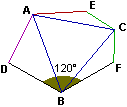
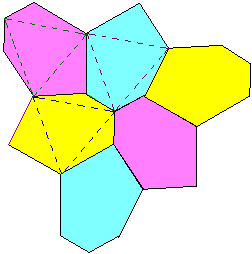
Per approfondimenti si vedano The Mathematical Side of M. C. Escher di D. Schattschneider e Napoleon, Escher and Tessellations di J.F. Riflby.
For further details see The Mathematical Side of M. C. Escher by D. Schattschneider and Napoleon, Escher and Tessellations by J.F. Riflby.
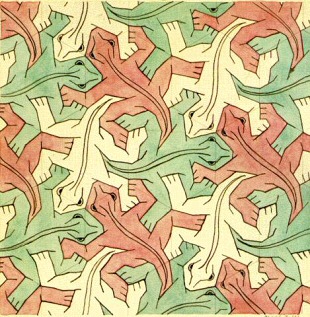
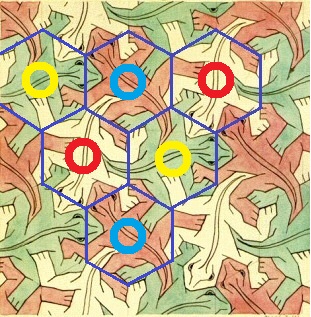
Esempi d'impiego del teorema precedente / Examples of use of the previous theorem:
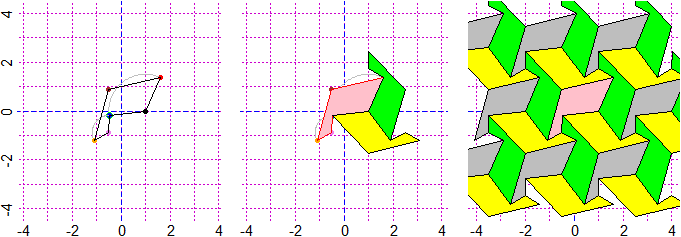

Per altri tipi di tassellazioni vedi qui
/ For other types of tessellations see here